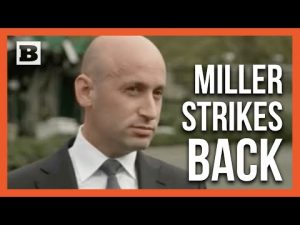In a flurry of tariffs, trade negotiations, and a hefty dose of financial market drama, the United States has taken a bold step in its dealings with China and other global partners. Recently announced measures have caused quite a stir, with Treasury Secretary Bessant emphasizing that the U.S. still stands as a premier destination for international business. It seems that the message is loud and clear: other countries should be ready to come to the table for fruitful negotiations if they want to avoid getting caught in the tariff crossfire.
The epicenter of this trade saga began just 15 hours ago when new tariffs were set to take effect. However, the White House made a decisive move to pause these tariffs for 90 days. This pause is not just a whimsical decision; it reflects a strategic maneuver aimed at granting leeway for negotiations with over 75 countries that were eager to reach fair agreements. In response to this unexpected turn, financial markets reacted positively, with the Dow Jones Industrial surging and investors breathing a sigh of relief.
Secretary Bessant laid out the thought process behind the pause, which hinges on the idea of maximizing negotiating leverage. By showcasing a willingness to engage in dialogue and explore potential compromises, the administration hopes to encourage allies to come forward with their best deals. It appears that all options are on the table, with talks not only about tariffs but also regarding long-standing trade imbalances and currency manipulation. The goal is clear: to secure advantageous terms that benefit American consumers and industries.
Interestingly, China’s current predicament is quite notable; the country has faced significant backlash with tariffs soaring to an impressive 125%. As they brace for the economic consequences of their actions, the U.S. seeks to navigate these negotiations with confidence. Experts suggest that while China may have been able to export their way to economic prominence, they are now confronting the realities of unfavorable trade relationships, especially when faced with significant tariffs imposed by the U.S.
While the markets seem to revel in this uncertainty turned to opportunity, the future remains a mixed bag. The fine details of negotiations with 75 countries won’t unfold overnight. The Secretary hinted that some conversations were already underway, but the complexity of these negotiations signifies it will be a marathon, not a sprint. With a 90-day window for dialogue, all eyes will be on how countries, including Japan and South Korea, respond as they position themselves for better trade relations. The real question remains: can the U.S. sustain this momentum and secure a fair deal for American workers?
All in all, the ongoing trade saga is shaping up to be a significant chapter in the history of U.S. economic policy. The stakes are undoubtedly high, and whether this pause leads to a productive outcome or merely delays the inevitable remains to be seen. What’s certain is that in this game of economic chess, the U.S. has gambled—and for now, it appears to be holding its own.







